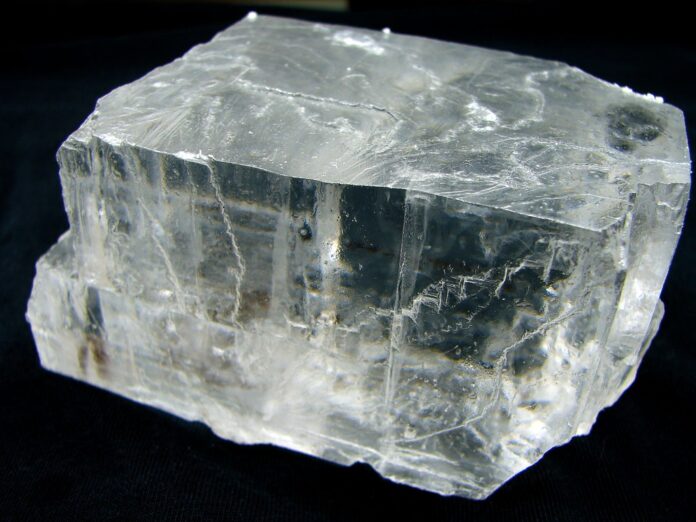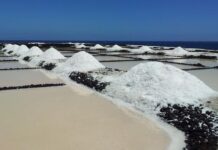
Το αλάτι είναι πολύ διαδεδομένο στη φύση. Βρίσκεται διαλυμένο στο νερό της θάλασσας και στο νερό ορισμένων λιμνών. Επίσης, βρίσκεται σε στερεή κατάσταση μέσα στη γη, όπως π.χ. στην Πολωνία, στην Αυστρία, στη Γερμανία κλπ (ορυκτό αλάτι ή αλίτης).
Εξαγωγή του ορυκτού αλατιού
Το ορυκτό αλάτι (Αλίτης) εξάγεται και παραλαμβάνεται με εξόρυξη ή με διάλυση. Η πρώτη μέθοδος, αυτή της εξόρυξης, χρησιμοποιείται όταν τα κοιτάσματα του ορυκτού είναι καθαρά. Όταν περιέχουν ξένες προσμείξεις εφαρμόζεται η μέθοδος της διάλυσης, δηλαδή τοποθετούνται δύο σωλήνες από την επιφάνεια της γης μέχρι το βάθος, όπου βρίσκεται το κοίτασμα. Οι σωλήνες αυτοί είναι συγκεντρωτικοί και επικοινωνούν μεταξύ τους. Από τον ένα εισάγεται καθαρό νερό. Το νερό μαζί με το διαλυμένο αλάτι από το ορυκτό ανέρχεται μέσα από το δεύτερο σωλήνα, με τη βοήθεια αντλίας και το διάλυμα αυτό υφίσταται αρχικά διήθηση και, στη συνέχεια, εξατμίζεται για να παραληφθεί το καθαρό προϊόν.
Before storage, the salt is treated with an anti-caking agent which will stop the pieces coagulating. This ensures that it can be held in local storage depots, ready for use as soon as the bad weather sets in!
Rock salt was first discovered in Winsford in Cheshire in 1844, which is the mine used by Online Rock Salt. Local prospectors were originally searching for coal – which, ironically, would be used to heat the brine-filled pans that made salt. The value of their find did not go unnoticed, however, and during the nineteenth century mining methods led to one million tonnes of rock salt being mined between 1844 and 1892.
Mining methods were still relatively basic in this era, however. Shovels, hand picks and black powder explosives were used to excavate the rock, which was then transported to the surface in wooden barrels. The work was back-breaking and often dark and uncomfortable. Up until the introduction of electricity to the mine in the 1930s tallow candles were stuck to the rock and used to light the working face. Bundles of unused candles can still be found in the old cavities of the mine to this day.
The Winsford mine was closed in 1892 to make way for the local Northwich mines. The salt market in the UK at the time was overcrowded and there was no room for two such close competitors. However, the Northwich mines were flooded in 1928 which led to the re-opening of the Winsford mine – and it remains in production today, making it the oldest working salt mine still in production today.









![Effect of sea mud compresses from Messolonghi lagoon as a treatment for cellulite [Experimental study]](https://saltandmud.gr/wp-content/uploads/2021/08/unnamed-218x150.png)










